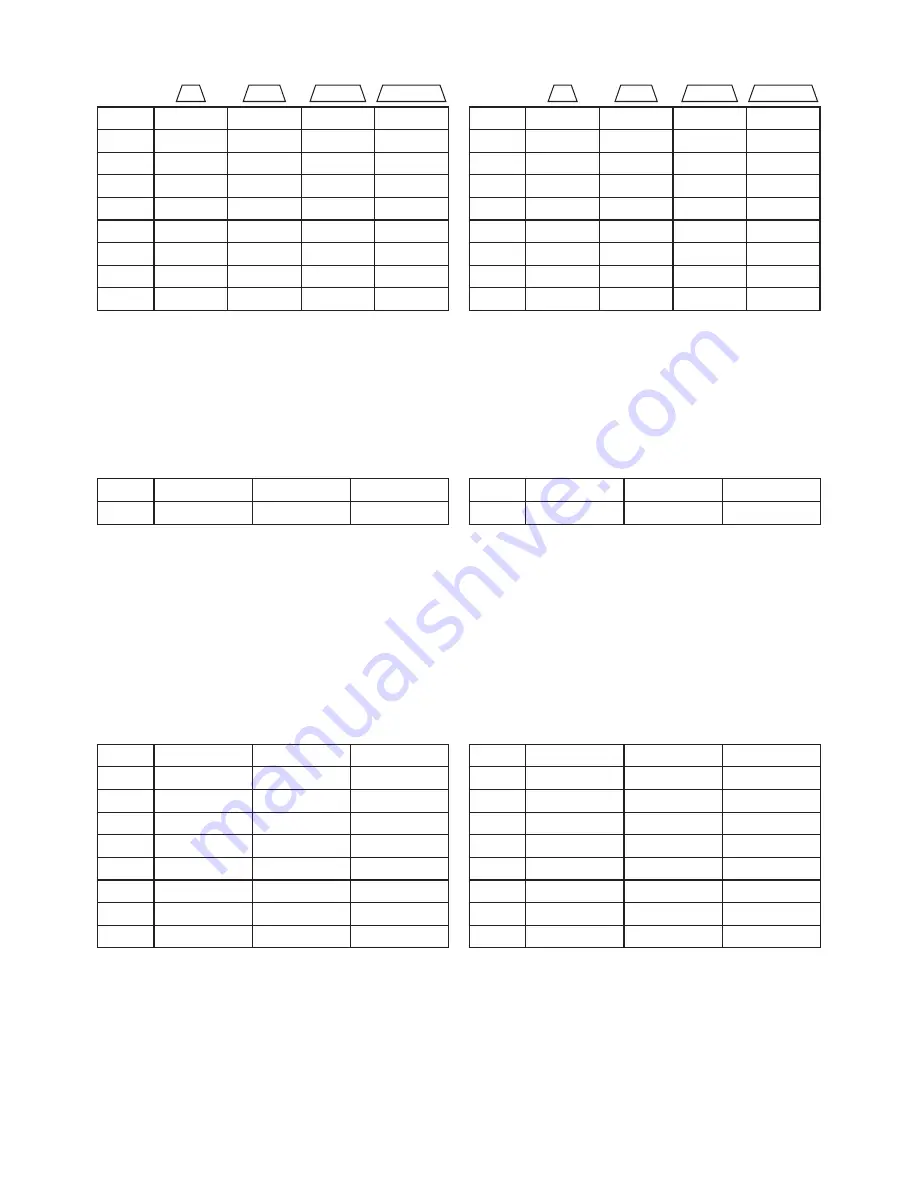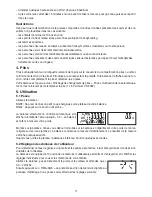
13
Man Woman
A lower value is often found in athletes. Depending on the type of sports, training intensity and physical
constitution, values may result which are below the recommended values stated.
It should, however, be noted that there could be a danger to health in the case of extremely low values.
Body water
The body water percentage is normally within the following ranges:
Man Woman
Body fat contains relatively little water. Therefore persons with a high body fat percentage have body water
percentages below the recommended values. With endurance athletes, however, the recommended values
could be exceeded due to low fat percentages and high muscle percentage.
Body water measurement with this scale is not suitable for drawing medical conclusions, for example con-
cerning age-related water retention. If necessary ask your physician.
Basically, a high body water percentage should be the aim.
Muscle percentage
The muscle percentage is normally within the following ranges:
Man
Woman
Bone mass
Like the rest of our body, our bones are subject to the natural development, degeneration and ageing pro-
cesses. Bone mass increases rapidly in childhood and reaches its maximum between 30 and 40 years of
age. Bone mass reduces slightly with increasing age. You can reduce this degeneration somewhat with heal-
thy nutrition (particularly calcium and vitamin D) and regular exercise. With appropriate muscle building, you
can also strengthen your bone structure.
Note that this scale will not show you the calcium content of your bones, but will measure the weight of all
bone constituents (organic substances, inorganic substances and water).
top
good
average
poor
Age
very good
good
average
poor
10 -14
<11 %
11-16 %
16,1- 21 % >21,1 %
15 -19
<12 %
12 -17 %
17,1- 22 % >22,1 %
20 - 29
<13 %
13 -18 %
18,1- 23 % >23,1 %
30 - 39
<14 %
14 -19 %
19,1- 24 % >24,1 %
40 - 49
<15 %
15 - 20 %
20,1- 25 % >25,1 %
50 - 59
<16 %
16 - 21 %
21,1- 26 % >26,1 %
60 - 69
<17 %
17- 22 %
22,1- 27 % >27,1 %
70 -100 <18 %
18 - 23 %
23,1- 28 % >28,1 %
top
good
average
poor
Age
very good
good
average
poor
10-14
<16 %
16 - 21 %
21,1- 26 % >26,1 %
15-19
<17 %
17- 22 %
22,1- 27 % >27,1 %
20-29
<18 %
18 - 23 %
23,1- 28 % >28,1 %
30-39
<19 %
19 - 24 %
24,1- 29 % >29,1 %
40-49
<20 %
20 - 25 %
25,1- 30 % >30,1 %
50-59
<21 %
21- 26 %
26,1- 31 % >31,1 %
60-69
<22 %
22 - 27 %
27,1- 32 % >32,1 %
70-100 <23 %
23 - 28 %
28,1- 33 % >33,1 %
Age
low
normal
high
10 -14
<44
44 - 57 %
>57 %
15 -19
<43
43 - 56 %
>56 %
20 - 29
<42
42 - 54 %
>54 %
30 - 39
<41
41- 52 %
>52 %
40 - 49
<40
40 - 50 %
>50 %
50 - 59
<39
39 - 48 %
>48 %
60 - 69
<38
38 - 47 %
>47 %
70 -100 <37
37- 46 %
>46 %
Age
low
normal
high
10-14
<36
36 - 43 %
>43 %
15-19
<35
35 - 41 %
>41 %
20-29
<34
34 - 39 %
>39 %
30-39
<33
33 - 38 %
>38 %
40-49
<31
31- 36 %
>36 %
50-59
<29
29 - 34 %
>34 %
60-69
<28
28 - 33 %
>33 %
70-100
<27
27- 32 %
>32 %
Age
poor
good
very good
10 -100 <50
50 - 65 %
>65
Age
poor
good
very good
10-100
<45
45 - 60 %
>60














































